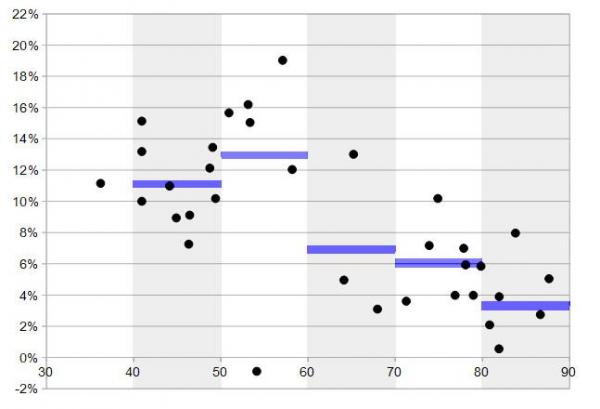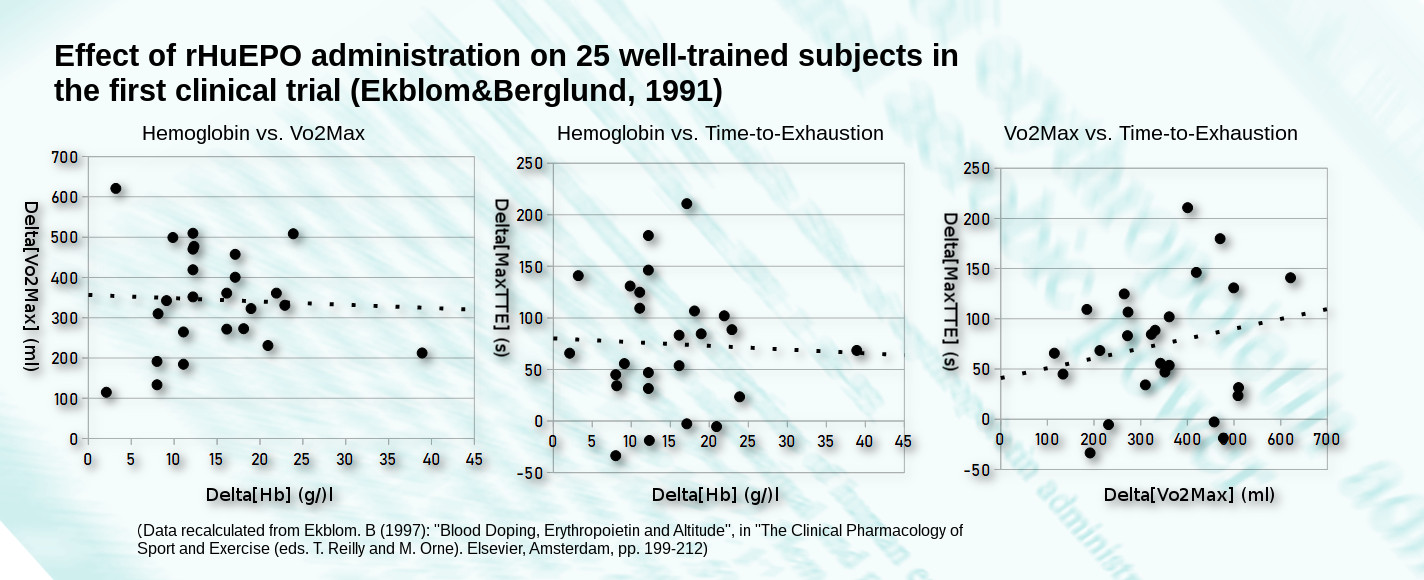The Vo2Max-issue is an interesting one, because whereas mainstream view is that it almost equals performance, the Dutch skeptic view is that it is a "mismeasure of man" (to use term popularized/invented by paleontologist Stephen Jay Gould).
While there is an interindividual correlation between Vo2Max and performance, it is indeed not clear if blood doping- induced increases in Vo2Max or power output at Vo2Max - as such - have much of a performance boosting effect if absolute velocity/Watts at thresholds (OBLA, LT) aren't increased, because the latter correlate far better with level of sustainable speed as the Dutch guys like to emphasize.
But as Dr. Michael J. Joyner pointed out when commenting another Dutch rHuEPO-review a few years ago, the idea is that while the thresholds remain proportionally same as a percentage of Vo2Max after rHuEPO treatment, "a rising tide lifts all boats":
It goes back to basic exercise physiology and the science of how races are won, Joyner says. The researchers don’t understand the relationship between VO2 max—your body’s maximum ability to consume oxygen, or your “performance ceiling”—and other metrics like lactate threshold, a key predictor of endurance performance, Joyner says.
...
“They don’t realize that your lactate threshold is a percentage of your VO2 max,” he says. “If your LT [lactate threshold] normally is 80 percent of VO2 max, and your VO2 max goes up, it’s 80 percent of a higher number. Your performance improves.”
I seriously do hope that other researchers have had deeper interest into the subject, because with all respect to Dr. Joyner, there is very limited evidence that the percentage of sustaineable power (his 80 %) remains the same as percentage of Vo2Max after blood doping even when it LT/OBLA etc. tend to increase more-or-less in absolute terms.
- When Dr. Björn Ekblom coauthored a blood reinfusion paper (Celsing et al. 1987), elevating total Hb by some 15 % increased Vo2Max by 7 %, but speed at 4 mmol increased ona average only by 2 %. "The Vo2Max at [4 mmol] was calculated to increase by an average of 100 ml, compared to the 420 ml increase in Vo2Max," the authors write. "Accordingly, a leftward shift of the blood lactate curve in relation to the oxygen uptake, as expressed as a percentage of the individual's Vo2Max, was noted".
- There is the study (Thomsen et al, 2007) in which submaximal TTE (80 % of baseline-Vo2Max) was increased by over 50 % (~35 vs 22 min) after rHuEPO treatment when the scientists used the same fixed workload after Vo2Max had increased by 12-13 % (ie. the latter was ~68-69 % of the new Vo2Max). But when the same guys tried to cycle at 80 % of the
new Vo2Max, their performance time was worse after the rHuEPO treatment and fell by some 27 % (~16 vs 22 min) when compared to baseline even when their lactate readings were higher (c:a 12 vs. 10).
- Just by going through a handful of studies, there seems to be generally a fall in lactate at submaximal intensities in the blood doping papers, and interestingly LT as a % of Vo2Max falls only slightly (from ~91 % to ~88-89 % by only some 2.5 %) in the tests of the Mont Ventoux - paper from 2017 in the rHuEPO-group. Because Vo2Max has been increased by almost 10 %, there was only slightly lower increase in the power output at LT (290 W vs 305-310 W).
Of course the key criticism by the Dutch researchers is valid even today -- In the end we don't really know how much of a performance boost elites get from blood doping regimens in absense of reliable data. Even the anecdotes are tricky if 100 % accurate, e.g. leaving aside training effect, if JV observed some 4-6 % boost in his watt output after taking rHuEPO, it can simultanously be totally true that watt output at a given submaximal heart rate zone (e.g. 120-130 BPM) increased by some 4-6 % but that watts at LT (and "true" performance) increased far less (or not at all), if LT-heart rate fell too much (e.g. from 175 to 170 or 165).







